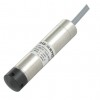It is often assumed that devices with an IP68 rating are suitable for immersing underwater for an indefinite period at any depth.
Not all devices that are IP68 are intended to be continuously submerged, some only require a temporary rating to protect from occasional submersion.
For example a pressure transmitter installed below ground level will be vulnerable to flooding during periods of heavy rainfall. In these applications the pressure transmitter only needs to be protected for a duration of a few days.
The most vulnerable part of a pressure transmitter to water ingress is the electrical interface and typically a mating connector with a temporary immersion specification would be used in flood risk areas.
It is particularly important to check the duration specified for a temporary IP68 in flood zones since the required duration will vary depending on the nature of flood risk.
The other consideration is whether the depth rating is adequate enough to withstand the water pressure for the required time period. Similar to the water resistant rating on a watch dial an IP68 rated device will be designed and tested for a particular depth.
For devices such as a submersible hydrostatic level transmitters the depth rating should exceed the highest measured depth by a significant margin so that there is sufficient protection for the service life of the sensor.
Due to the inter-relationship between depth and duration, an IP68 specification for temporary immersion may indicate more than one rating for the same device e.g. 10mH2O for 48 hours or 50mH2O for 6 hours.
All IP68 ratings should be accompanied by a specified depth and duration, however it is not always clearly indicated in manufacturer’s technical data sheets especially for those products which are obviously intended for long duration submersion such as borehole sensors.
Related Help Guides
- Choosing PVC, PUR, FEP and TPE cable types
- How to reduce submersible pressure sensor failures caused by moisture ingress
- Using absolute pressure sensors to measure hydrostatic level
- Using a screw-in or waterproof pressure transmitter to measure liquid level
- Improve the electrical termination of vented submersible pressure sensors
- Considerations for monitoring Landfill Water Level
- Why are Submersible applications so demanding of Pressure Transducers?
- Determining the Signal Cable Length of a Suspended Liquid Level Transducer
- Problem with zero drift when installing submersible pressure sensor

